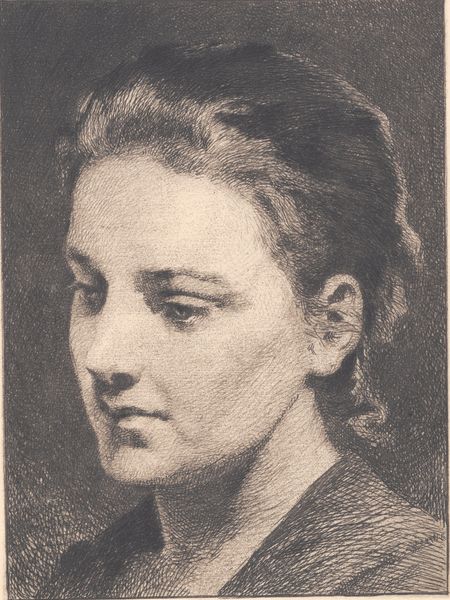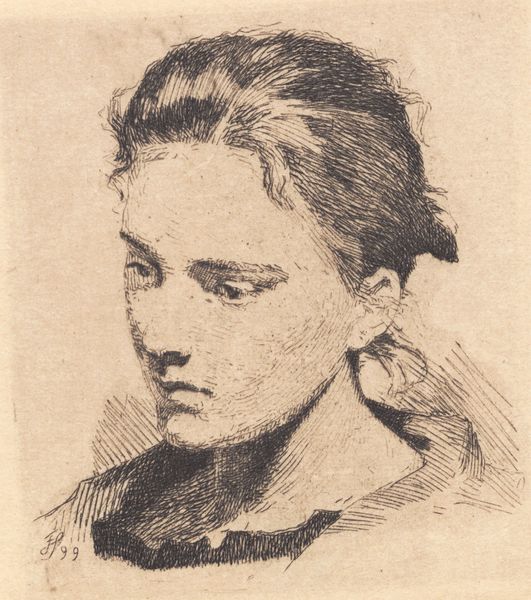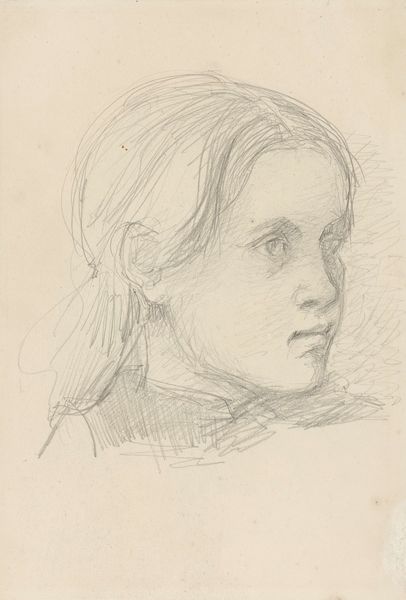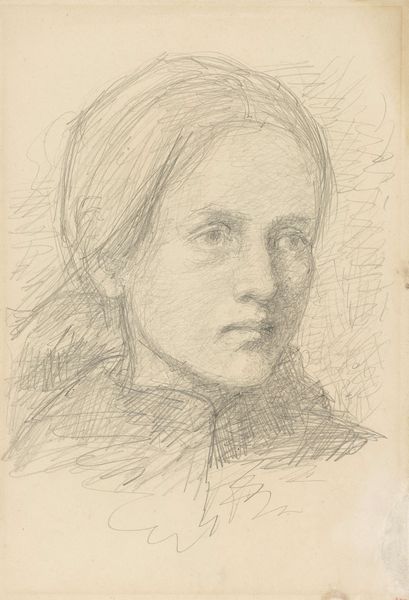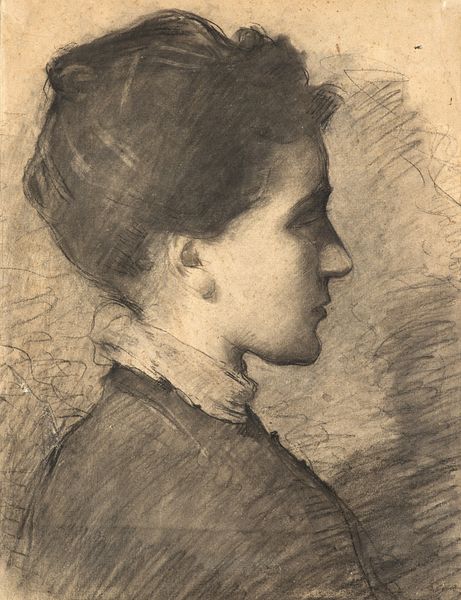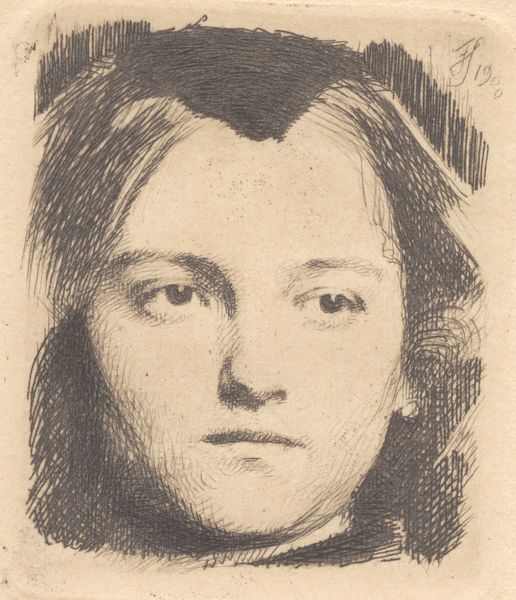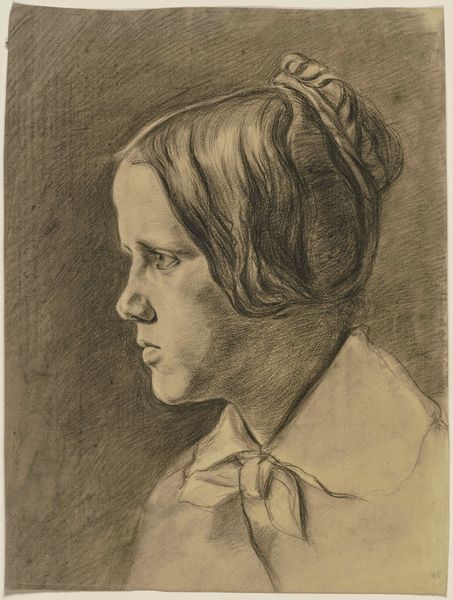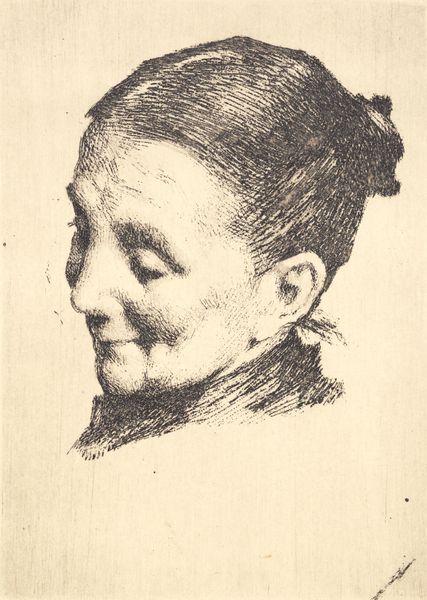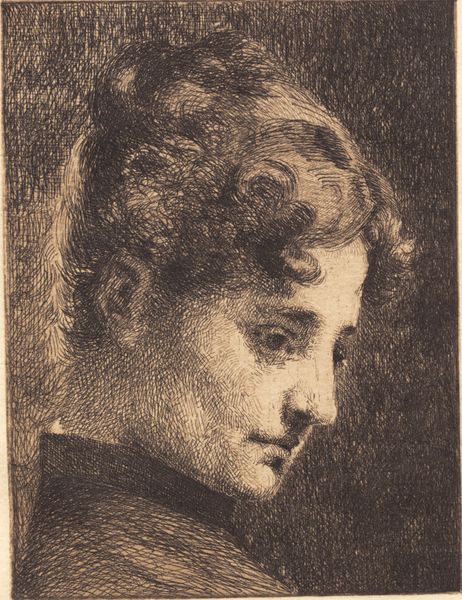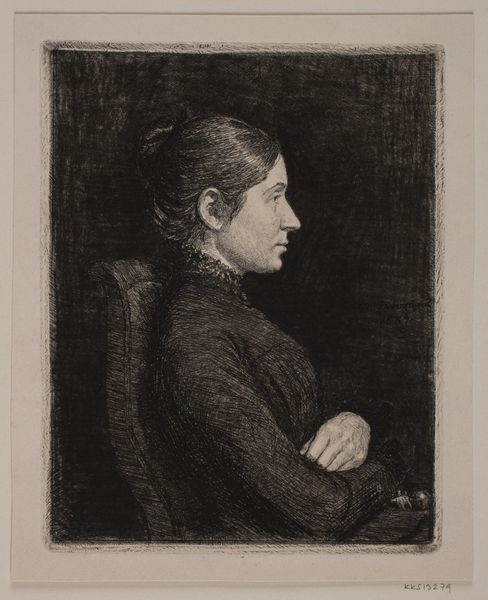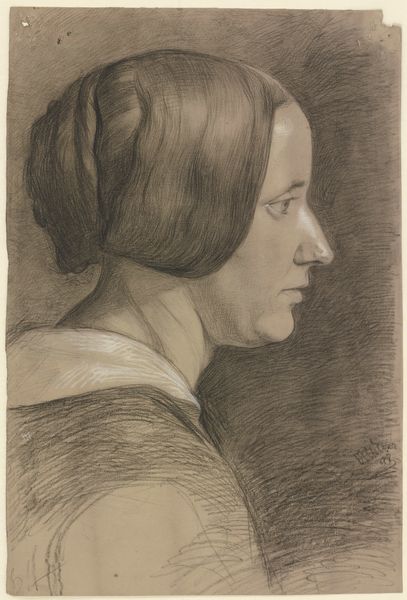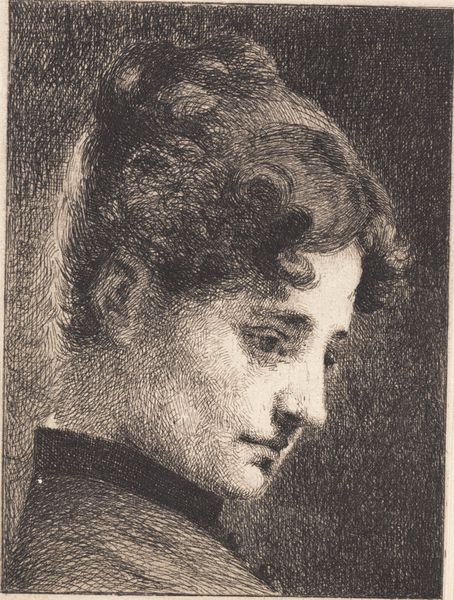
drawing, print, etching
#
portrait
#
drawing
# print
#
etching
#
portrait drawing
#
realism
Dimensions: 295 mm (height) x 195 mm (width) (plademaal)
Editor: This is "Young Girl in Profile with Pulled-Back Hair," an etching by Frans Schwartz, created in 1899. There's a somber, almost haunting quality to the way the artist captures the young woman's gaze. How do you interpret this work? Curator: The work feels incredibly contemporary, even though it was created over a century ago. To me, it speaks volumes about the societal constraints placed on women during that period. Consider the gaze; it’s averted, almost resigned. Do you see how the "pulled-back hair" might symbolize a forced conformity, a suppression of individuality? Editor: That's a fascinating perspective. I hadn't thought about the hair that way, more that it was simply the style of the time. But conformity definitely makes sense when thinking about social constraints of the time. Curator: Precisely. And the etching medium itself—a process that demands precision and control—could be seen as a metaphor for the restricted roles available to women then. Schwartz, as a male artist, is capturing not just a likeness but also a feeling. We must ask ourselves, what is his role, as a man, depicting this? Editor: It's interesting you mention his role as a man. It almost feels voyeuristic now that you bring it up. Was it typical for male artists to create such intimate portraits of women at that time? Curator: Intimate, yes, but through whose gaze and for whose consumption? Such portraits, even those seemingly "realistic," participated in shaping and reinforcing societal expectations around female beauty, docility, and submission. Who was this “young girl?" What class, background, identity does she have that informed her experiences? How is this portrayed here? Editor: Wow, I’m definitely seeing this in a different light now. Curator: These considerations aren’t about judging the artist, but understanding how artworks are active participants in shaping broader cultural narratives and systems of power. It requires a lens deeply entrenched in how race, class, and gender affected the sitters, the artwork, and even how it’s interpreted today. Editor: Thanks, that's given me a lot to think about in approaching not just this artwork, but others in the museum.
Comments
No comments
Be the first to comment and join the conversation on the ultimate creative platform.
